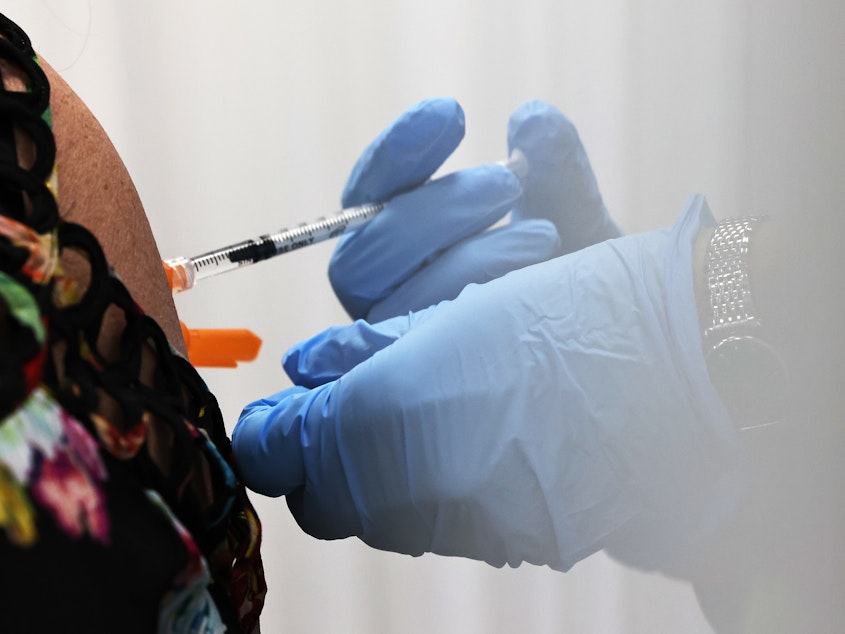Why There Will Be Fewer Johnson & Johnson COVID-19 Vaccines Next Week

There will be 86% fewer Johnson & Johnson vaccine doses allocated to states next week, new data from the Centers for Disease Control and Prevention show, highlighting the company's yo-yoing vaccine supply from week to week.
But next week's dip in supply isn't exactly the setback it appears to be.
It's the other side of a recent surge in Johnson & Johnson doses. The surge occurred because one of Johnson & Johnson's third party manufacturers was finally able to release its stockpile.
The company is called Catalent, and its facility in Indiana had been working on filling vaccine vials and readying them for distribution for a while. But it only recently got the Food and Drug Administration's blessing, officially adding it to J&J's supply chain and allowing its doses to be released to the public.
Now that those doses have been distributed, Johnson & Johnson is back to releasing as many doses as its team finishes making each week.
The company raised eyebrows last week when The New York Times first reported that another of its contract manufacturers, Emergent BioSolutions in Maryland, had mixed up ingredients and a Johnson & Johnson batch didn't pass quality standards. Those doses never made it to the public because the FDA had not yet signed off on the facility.
"Johnson and Johnson expects a relatively low level of weekly dose delivery until the company secures FDA authorization," President Biden's COVID-19 czar Jeffrey Zients said during Friday's White House briefing, referring to Emergent's FDA-authorized addition to Johnson & Johnson's supply chain. "With FDA authorization, the company also expects a cadence of up to 8 million weekly doses in total across state and federal channels later in April."
He added that the company was working with the FDA to resolve Emergent's manufacturing issues and installing new leadership at the facility.
The recent surge included 11 million doses.
Next week, 1.5 million J&J doses will be distributed, including 700,000 doses that will go out through the state allocation system, and another 800,000 that will be handed out through other federal programs, which have grown significantly during the Biden administration.
Supply of the Johnson & Johnson vaccine has been lumpy since its FDA authorization on Feb. 27. The CDC allocated 2.8 million doses to states the next week, followed by no doses the week after that, according to the CDC's state allocation database. Then, there were fewer than a half-million doses in each of the next two weeks. (The state allocation table is not a complete accounting of doses distributed, however, because many are allocated through other federal programs and not included in the data.)
It's no secret that Johnson & Johnson has been having manufacturing difficulties. Although its Aug. 5 Operation Warp Speed contract says it expected to deliver 37 million doses by the end of March, that goal had shrunk to 20 million doses, as Dr. Richard Nettles, vice president of medical affairs for the company's pharmaceutical division, told a congressional subcommittee on Feb. 23.
The Biden administration stepped in with help in early March, when it brokered a deal between J&J and a pharmaceutical, Merck, to increase the vaccine supply.
"We also invoked the Defense Production Act to equip two Merck facilities to the standards necessary to safely manufacture the J&J vaccine," President Biden said on March 2, adding that Johnson & Johnson was getting other government help as well, including daily logistical support from the Department of Defense.
Johnson & Johnson says it will deliver the promised 100 million doses to the United States government by the end of May, helping the Biden administration toward its goal of having enough vaccines for all American adults by that time.
"The Company continues to work closely with the U.S. Food and Drug Administration toward the Emergency Use Authorization (EUA) of the Emergent Bayview facility," said Johnson & Johnson spokesman Jake Sargent. [Copyright 2021 NPR]



